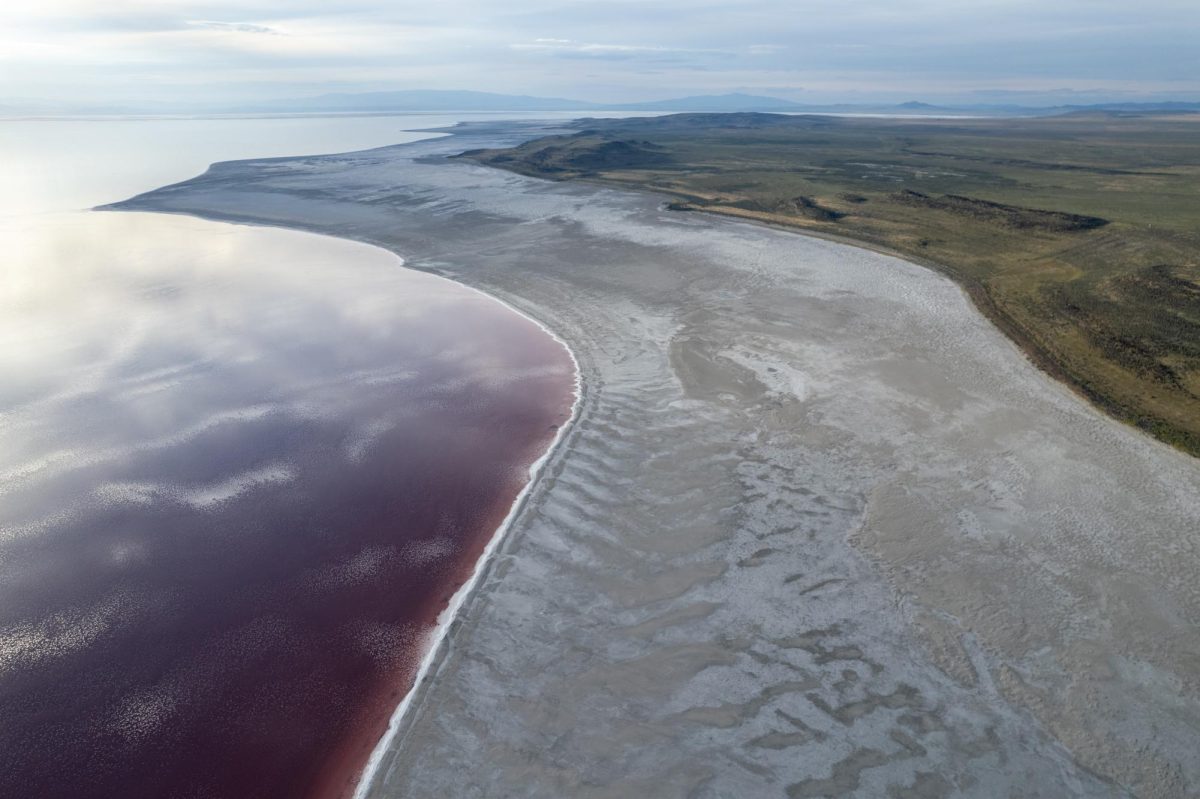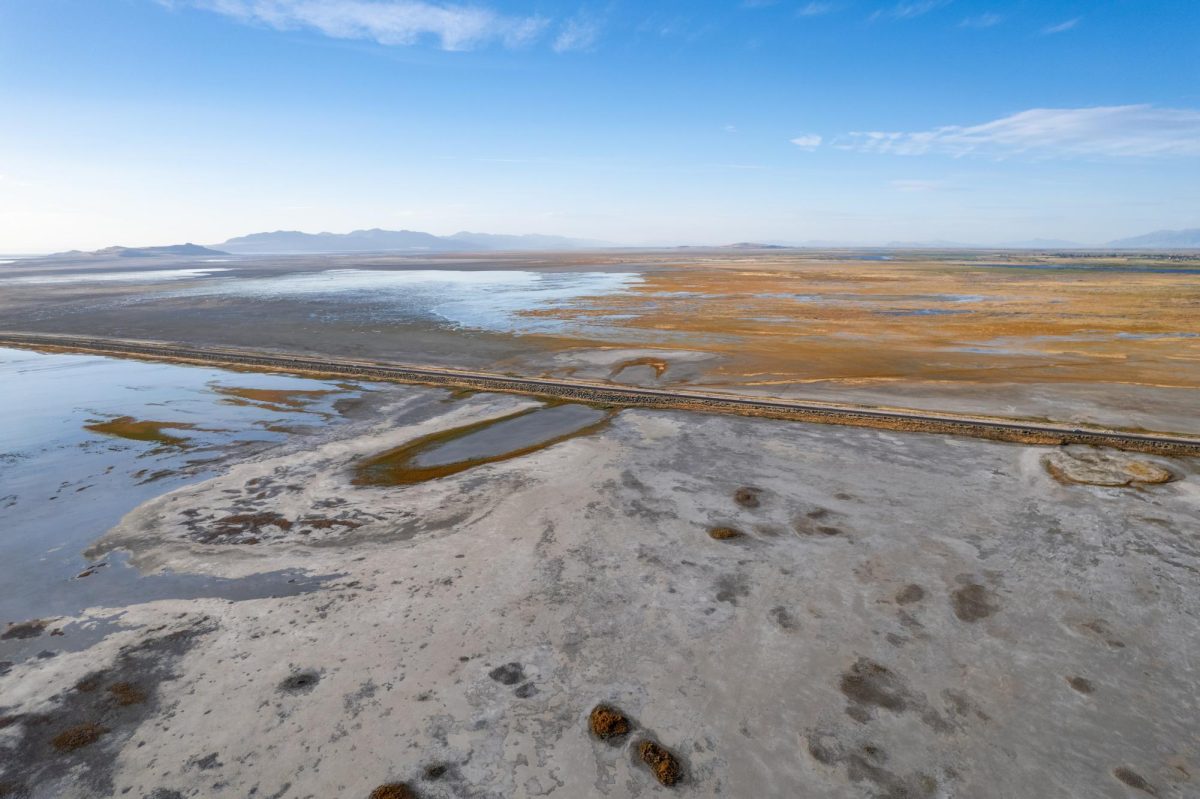Although the Great Salt Lake ended its 2023 water year with higher-than-average precipitation, there are still considerations for the future of how to best protect the lake and its ecosystem.
As a result, Great Salt Lake rose 5 and 1/2 feet at the south arm of the lake after hitting a record low in fall 2022, according to a press release.
At the Kem C. Gardner Policy Institute’s monthly Newsmaker Breakfast, several state leaders and experts gathered to discuss and give updates on policies surrounding Utah’s beloved lake.
Panelists included Brian Steed, Great Salt Lake commissioner and executive director of Janet Quinney Lawson Institute for Land, Water & Air; David Tarboton, director of Utah Water Research Laboratory; Director of Utah Division of Water Resources Candice Hasenyager; William Anderegg, director of Wilkes Center for Climate Science & Policy and Paul Brooks, professor of geology and geophysics at the University of Utah.
Gardner Institute Director Natalie Gochnour, who moderated the event, said she was proud to see this collaboration happen, with some of the “best of the best” present and making a difference.
The strike team formed in 2022 and consists of experts from the U, Utah State University and other Utah state agencies to study the lake’s grim condition.
The event began with Steed and Anderegg who presented data from last year, collected by the Great Salt Lake Strike Team. The data included the Great Salt Lake’s precipitation and policy updates.
Since the 2023 water year was lower than 2022, the panelists stressed the importance of planning for the future, even in the wake of a good year.
The effects of an exposed lakebed can be detrimental to Utahns.
“Historically, the Great Salt Lake’s elevation averaged 4,200 feet and it covered 1,700 square miles,” the press release read. “Now about 750 square miles of the lakebed is exposed, raising [concerns] that dust laden with toxic chemicals accumulated in the bed are degrading Salt Lake City’s air quality.”
Brooks is a professor of geology and geophysics at the U. His expertise “focuses on how climate and landscapes influence both surface and ground water supply.”
Steed said at the end of 2022 the reservoirs were in “scary” shape.
“This year, we stored over 1.6 million acre feet of water in those reservoirs,” Steed said. “And that’s good news for those of us that rely on water, which is everybody by the way, and it helps us get through those drier summer months.”
He also said that even though filling up the reservoirs is beneficial, it still means that the reservoir water does not reach the lake.
Anderegg gave an overview of other types of water storage in Utah like groundwater, streams, reservoirs and the Great Salt Lake. The report focused on efforts to maximize and conserve the precipitation in our state.
Preserving and saving the Great Salt Lake is a topic that is on the public’s mind as the 2024 legislative session kicks into gear next Tuesday.
During this legislative session, Nan Seymour River Writing plans to gather at the Capitol to hold daily vigils for the Great Salt Lake.
Steed said he believes people can have an impact.
“ … If we do involve ourselves in conservation efforts going forward, we can actually recover the lake over certain time horizons,” he said. “Now, I know how fast we recover the lake is going to be an issue for policy considerations, as well as how much water we actually get naturally.”
Brooks also agreed with Steed’s optimism toward the future of the lake.
“We can save the lake,” Brooks said. “All of Utah will be stronger for it. Doing so will improve and safeguard our economy, environment and health.”






John Hedberg • Jan 12, 2024 at 11:41 am
“Strike Team”?

Do I need a ‘Strike Team’ to get me out of bed and into the shower every morning before the sky turns blue and the clouds turn pink & orange? The sun rises, the seasons change, and the lake rises and falls. Are we going to stand up a Strike Team to save Lake Bonneville, because I have news for you: it already left, and if the sea shells I found on top of the hills behind the U are any indication, the environment will probably continue to change and fluctuate. Will we be able to adapt and compete, thrive and flourish? If we’re strong first at home, then we can be strong for everything and everyone around us, too~ Yeah?